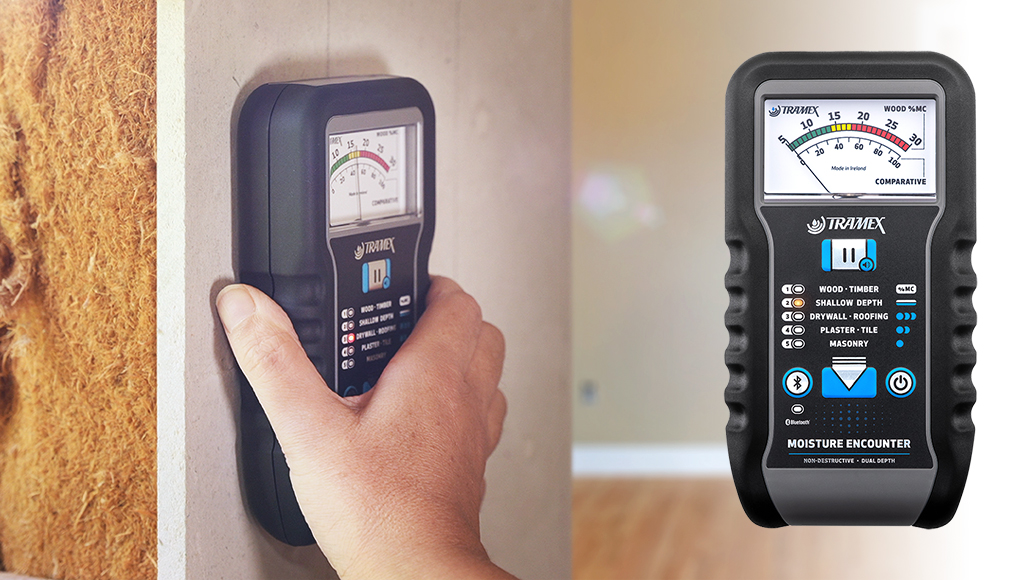Exactly how to Utilize a Moisture Meter to Discover Concealed Water Damage in Your Building
Exactly how to Utilize a Moisture Meter to Discover Concealed Water Damage in Your Building
Blog Article
The Ultimate Overview to Moisture Meters: A Comprehensive Introduction and Exactly How They Can Conserve You Cash
In the realm of building maintenance, building and construction, and different sectors, the relevance of properly measuring wetness levels can not be overstated. Moisture meters act as important devices in identifying and checking moisture web content in products, aiding in protecting against pricey damages and making certain the top quality of products. Comprehending the nuances of various kinds of dampness meters, their applications, and the potential cost-saving benefits they use can be a game-changer for businesses and specialists alike. Discovering exactly how these tools can not only improve processes but also add to financial cost savings is a trip worth beginning on.
Kinds of Wetness Meters
Different kinds of dampness meters are available for various applications in various markets. One common type is the pin-type dampness meter, which measures the electric resistance in between 2 pins put right into a product. This kind appropriates for wood, drywall, and various other building products. Pinless dampness meters, on the other hand, use electro-magnetic sensor plates to scan a bigger area without creating damage to the material's surface. Moisture Meter. These meters are ideal for promptly analyzing moisture degrees in big locations such as floors and wall surfaces.

Furthermore, there are additionally specialty wetness meters created for certain products like hay, grain, or soil. These meters offer accurate dampness readings tailored to the distinct homes of the product being evaluated. Infrared moisture meters determine the thermal buildings of a product to establish its dampness web content non-invasively, making them helpful for applications where pin or pinless meters may not be ideal. Comprehending the different kinds of dampness meters readily available can assist industries pick the most proper device for their details wetness dimension demands.

Benefits of Using Wetness Meters
Moisture meters provide vital advantages in accurately evaluating and monitoring dampness degrees in diverse products and settings. One of the primary advantages of using moisture meters is the avoidance of prospective damages created by excess dampness.
In addition, using wetness meters can cause enhanced energy efficiency. By identifying locations with high moisture levels, such as leakages or inadequate insulation, changes can be made to boost power preservation and minimize utility costs. In farming settings, wetness meters play a critical role in maximizing plant yields by enabling farmers to monitor dirt wetness levels and make educated irrigation decisions. Overall, the advantages of making use of dampness meters cover across numerous markets, supplying economical services and promoting far better quality control methods.
How to Choose the Right Dampness Meter
Choosing the appropriate wetness meter includes considering crucial variables such as material compatibility, measurement array, and calibration precision. When selecting a wetness meter, it's important to make sure that the meter appropriates for the certain material you will be screening. Various materials have varying electric residential or commercial properties that can influence wetness readings, so picking a meter created for your material is important for precise results. In addition, consider the dimension series of the dampness meter. Make sure that the meter can identify wetness levels within the variety required for your applications. Calibration accuracy is another important aspect to remember. Select a dampness meter with trustworthy calibration to make sure exact and regular readings. Some meters might require routine calibration adjustments, so recognizing the calibration procedure is essential. By carefully reviewing these variables, you can pick a moisture meter that fulfills your needs and provides exact dampness dimensions for your projects.
Appropriate Techniques for Wetness Meter Usage

Expense Savings Via Wetness Meter Applications
Just how can the tactical usage of dampness meters cause substantial expense financial savings across different sectors? Wetness meters play a critical role in price financial savings by preventing possible damages and making certain quality assurance in different fields. In the farming industry, moisture meters aid in figuring out the ideal time for gathering plants, stopping excess or over-drying moisture that can affect the last product's high quality. This specific surveillance assists farmers avoid unnecessary losses and optimize their yield.
In a similar way, in construction, wetness meters aid stop pricey problems by detecting wetness levels in structure read what he said products, such as timber or concrete, which can result in structural problems if not resolved quickly. By identifying problem areas at an early stage, contractors can take rehabilitative actions to prevent substantial repairs or substitutes, eventually saving money and time.
Moreover, in the food processing sector, dampness meters are necessary for checking product high quality and ensuring conformity with security laws. By precisely gauging dampness material in foodstuff, producers can stop spoilage, keep quality, and decrease waste, leading to considerable expense financial savings. Generally, the critical application of moisture meters is a beneficial financial investment that can result in substantial cost decreases and boosted efficiency across various sectors.
Verdict
In verdict, dampness meters are beneficial tools for determining and identifying moisture degrees in numerous materials. By using the ideal wetness meter and complying with appropriate techniques, users can successfully avoid expensive damages caused by excess dampness.
Dampness meters offer as look at this site indispensable devices in identifying and keeping track of moisture content in products, assisting in preventing costly damages and making sure the top quality of products. Infrared dampness meters determine the thermal homes of a product to determine its moisture content non-invasively, making them valuable for applications where pin or pinless meters may not be ideal.Dampness meters use vital advantages in properly analyzing and monitoring dampness degrees in varied products and atmospheres. In farming settings, dampness meters play a critical duty in enhancing crop yields by enabling farmers to monitor dirt dampness levels and make informed irrigation decisions.In conclusion, wetness meters are beneficial tools for identifying and gauging wetness levels in different products.
Report this page